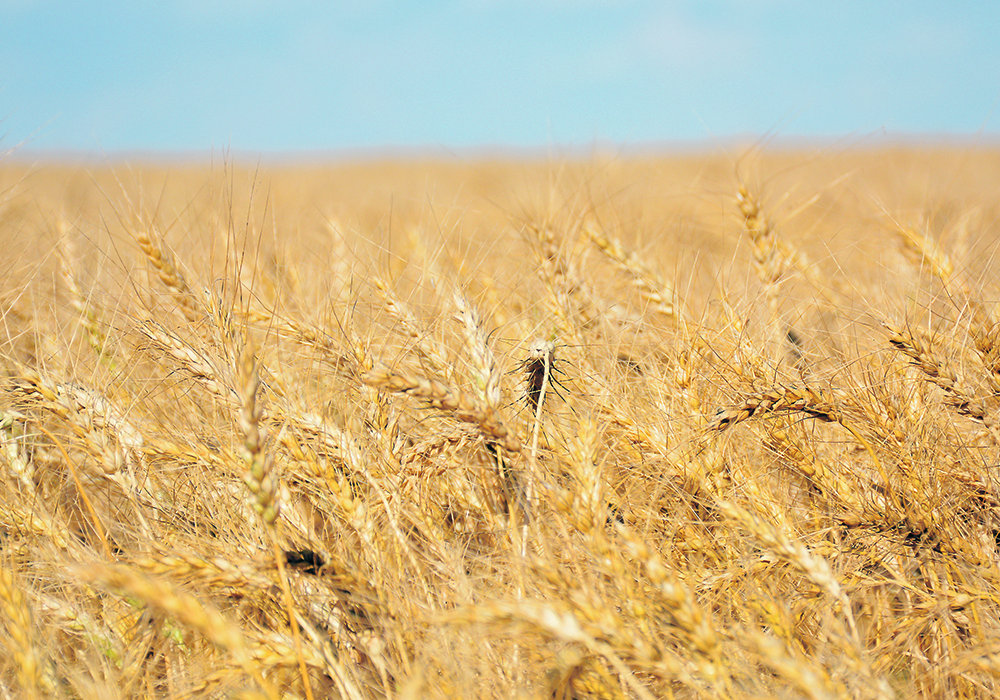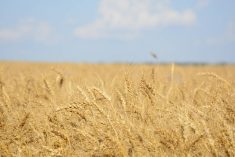An analyst thinks Russia’s strong export program is behind spring wheat’s recent 15 percent price decline at Minneapolis
Canada entered the 2023-24 crop year with the lowest combined wheat and durum stocks in history.
Agriculture Canada estimates there were 3.24 million tonnes of both crops on hand as of Aug. 1, 2023.
That would break the previous record low of 3.66 million tonnes set in 2021-22 following a severe drought.
Analysts are also forecasting lacklustre Canadian wheat production. MarketsFarm pegged all-wheat production at 30.4 million tonnes as of the end of July, well below Agriculture Canada’s current estimate of 33.2 million tonnes.
Meanwhile, the U.S. Department of Agriculture is forecasting an average U.S. spring wheat yield of 41.8 bushels per acre, down from last year’s 46.2 bu.
Read Also

Flax sector sees omega-3 opportunity
SASKATOON — A global shortage of omega-3 oils could be an opportunity for the flax sector, says an industry official….
Production is forecast to fall to 12.24 million tonnes from 13.12 million tonnes last year.
So with all that in mind, why did Minneapolis wheat prices tumbled 15 percent between July 24 and Aug. 24?
“It is a bit of a head-scratcher given the forecast for production in the spring wheat region,” said Erica Olson, marketing development and research manager with the North Dakota Wheat Commission.
“And also, the fact that we have not recovered our supply in the last two years since the drought back in 2021.”
Her best explanation is that news out of the Black Sea region is dominating all wheat markets, even though it does not compete directly with the spring wheat produced in North America.
“That continued flow of Russian exports, and the level at which they’re exporting, continues to weigh on the market in general,” she said.
Russia exported a record 46 million tonnes of wheat in 2022-23 and the 2023-24 crop just keeps getting bigger.
SovEcon recently upped its forecast for this year’s crop by five million tonnes to 92.1 million tonnes. That is well above the USDA’s estimate of 85 million tonnes.
Olson said the drop in spring wheat futures values is also partially due to normal harvest time pressure, although the market is still uncertain how big this year’s crop will be. There is incredible variability, even on a field-to-field basis.
Another bearish factor is that U.S. wheat exports have been sluggish. Spring wheat is faring better than other classes, but demand is still lower than it was a year ago.
Brennan Turner, an independent grain industry analyst, said speculators have essentially exited the wheat market while they await better information about the size of this year’s crop.
“Nobody wants to bite the bullet on making a bet at this point,” he said.
Buyers are on the sideline, and with no new bullish news the market has been falling.
His advice to growers is to stop fretting about harvest time delivery prices. They should first focus on filling existing new-crop contracts and then be incremental sellers in the fall and winter months as the market appears to have more upside than is being indicated today.
Turner’s analysis of western Canadian spring wheat spot prices in 2021-22, the last big drought year, indicates November might be the next good opportunity to sell, followed by January.
















